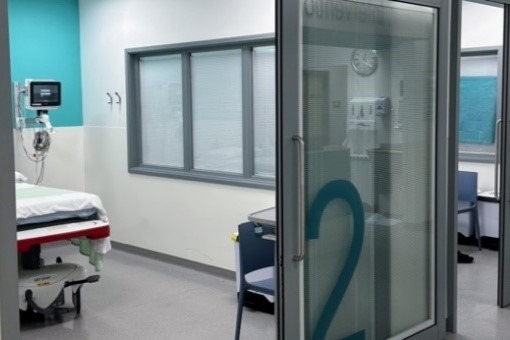My experience
During my time at St George’s, I was profoundly impressed by the professionalism and dedication of the entire IR team. From the meticulous board rounds and team meetings to the execution of complex procedures, every detail was handled with the utmost care and precision. The exemplary attitude and high standards of the department are attributes I hope to bring back to my home institution in Hungary.
As a trainee with experience in endovascular interventions but limited exposure to non-vascular and oncological interventions, the training I received was of the highest quality. I had the opportunity to observe and assist in a wide range of procedures, including sialoplasty, sclerotherapy, liver and kidney ablations, hepatocellular carcinoma (HCC) ablation, transarterial chemoembolization (TACE), transjugular intrahepatic portosystemic shunt (TIPS), and deep vein arterialization.
Some of the highlights of my fellowship included learning about state-of-the art interventions, such as the following:
Deep vein arterialization procedures
As a radiology resident interested mostly in endovascular procedures, one of the highlights of my stay was being part of deep vein arterialization procedures. This included participating in preoperative vascular team meetings and observing the embolization procedure after the main operation. Special thanks to Dr. Joo-Young Chun, one of the leaders in vascular procedures at the IR department, for allowing me to be part of the team.
Bleomycin sclerotherapy and paediatric interventions
Another highlight was attending Dr. Lakshmi Ratnam’s clinics and shadowing her during state-of-the-art bleomycin sclerotherapy for venous malformations and paediatric interventions. She was definitely one of the most enthusiastic instructors throughout my stay, providing invaluable insights and guidance.
Oncological interventions
Having had limited exposure to oncological interventions such as kidney and liver ablations, TACE, and TIPS, it was an amazing opportunity to learn from Dr. Mike Gonsalves and Dr. Seyed Renani, who are renowned experts in the field. Their expertise and willingness to teach significantly enhanced my understanding of these complex procedures.











